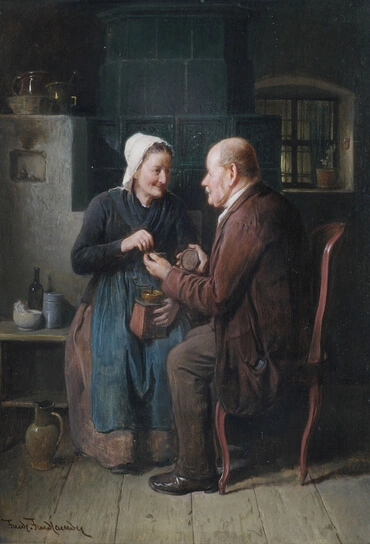Husband

In general, men are driven by intellect and women by affections, and because of this men in the Bible generally represent knowledge and truth and women generally represent love and the desire for good. This generally carries over into marriage, where the man's growing knowledge and understanding and the woman's desire to be good and useful are a powerful combination. In many cases in the Bible, then, "husband" refers to things of truth and understanding, much as "man" does. Magnificent things can happen in a true marriage, though, when both partners are looking to the Lord. If a husband opens his heart to his wife, it's as though she can implant her loves inside him, transforming his intellectual urges into a love of growing wise. She in turn can grow in her love of that blooming wisdom, and use it for joy in their married life and in their caring for children and others in their life. Many couples, even in heaven, stay in that state -- called "Spiritual" -- growing deeper and deeper to eternity. There is the potential, though, for the couple to be transformed: through the nurturing love of his wife the husband can pass from a love of growing wise to an actual love of wisdom itself, and the wife can be transformed from the love of her husband's wisdom into the wisdom of that love -- the actual expression of the love of the Lord they have built together. In that state -- called "Celestial" -- the husband represents love and the desire for good, and the wife represents truth and knowledge.
Doctrine of the Lord # 62
62. The New Church Is Meant by the New Jerusalem in the Book of Revelation
After the book of Revelation describes what the state of the Christian Church would be at its end, and what it is now, and after those people of that church who are meant by the false prophet, the dragon, the harlot, and beasts have been cast into hell, thus after the Last Judgment had been accomplished, we are told then:
I saw a new heaven and a new earth, for the first heaven and the first earth had passed away.... Then I, John, saw the Holy City, New Jerusalem, coming down out of heaven from God.... And I heard a loud voice from heaven saying, “Behold, the tabernacle of God is with men, and He will dwell with them, and they shall be His people. And (He) Himself will be with them and be their God.... He who sat on the throne said, “Behold, I make all things new.” And He said to me, “Write, for these words are true and faithful.” (Revelation 21:1-3, 5)
The new heaven and new earth that John saw, after the first heaven and first earth had passed away, do not mean a new stellar or meteorological heaven visible to human eyes, nor a new earth for people to dwell on. Rather they mean the new existence of a church in the spiritual world, and the new existence of a church in the natural world.
[2] Since the new existence of a church in both worlds, spiritual and natural, was brought about by the Lord when He was in the world, therefore a similar prediction is made in the Prophets, namely that a new heaven and new earth would then come into existence, as said in Isaiah 65:17, 66:22, and elsewhere. And these cannot mean, therefore, a new heaven visible to the eyes, or an earth inhabitable by people.
By the spiritual world we mean the world where angels and spirits dwell, and by the natural world we mean the world where people dwell.
The new existence of a church has been recently brought about in the spiritual world, and the new existence of a church will be brought about in the world, as we have shown several times in the short work The Last Judgment, and as we will show more fully in its Continuation.
Published by the General Church of the New Jerusalem, 1100 Cathedral Road, Bryn Athyn, Pennsylvania 19009, U.S.A. A translation of Doctrina Novae Hierosolymae de Domino, by Emanuel Swedenborg, 1688-1772. Translated from the Original Latin by N. Bruce Rogers. ISBN 9780945003687, Library of Congress Control Number: 2013954074.






